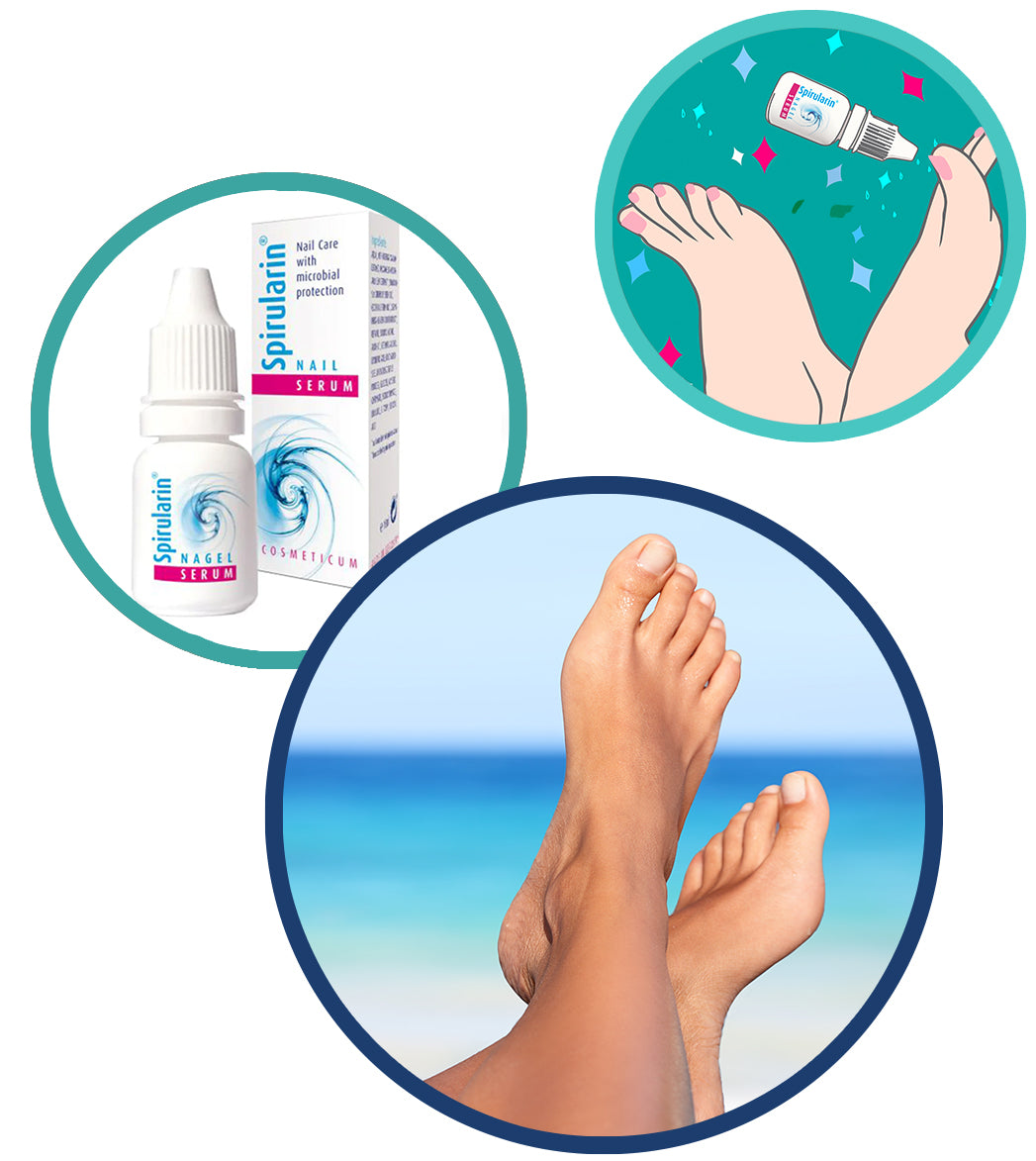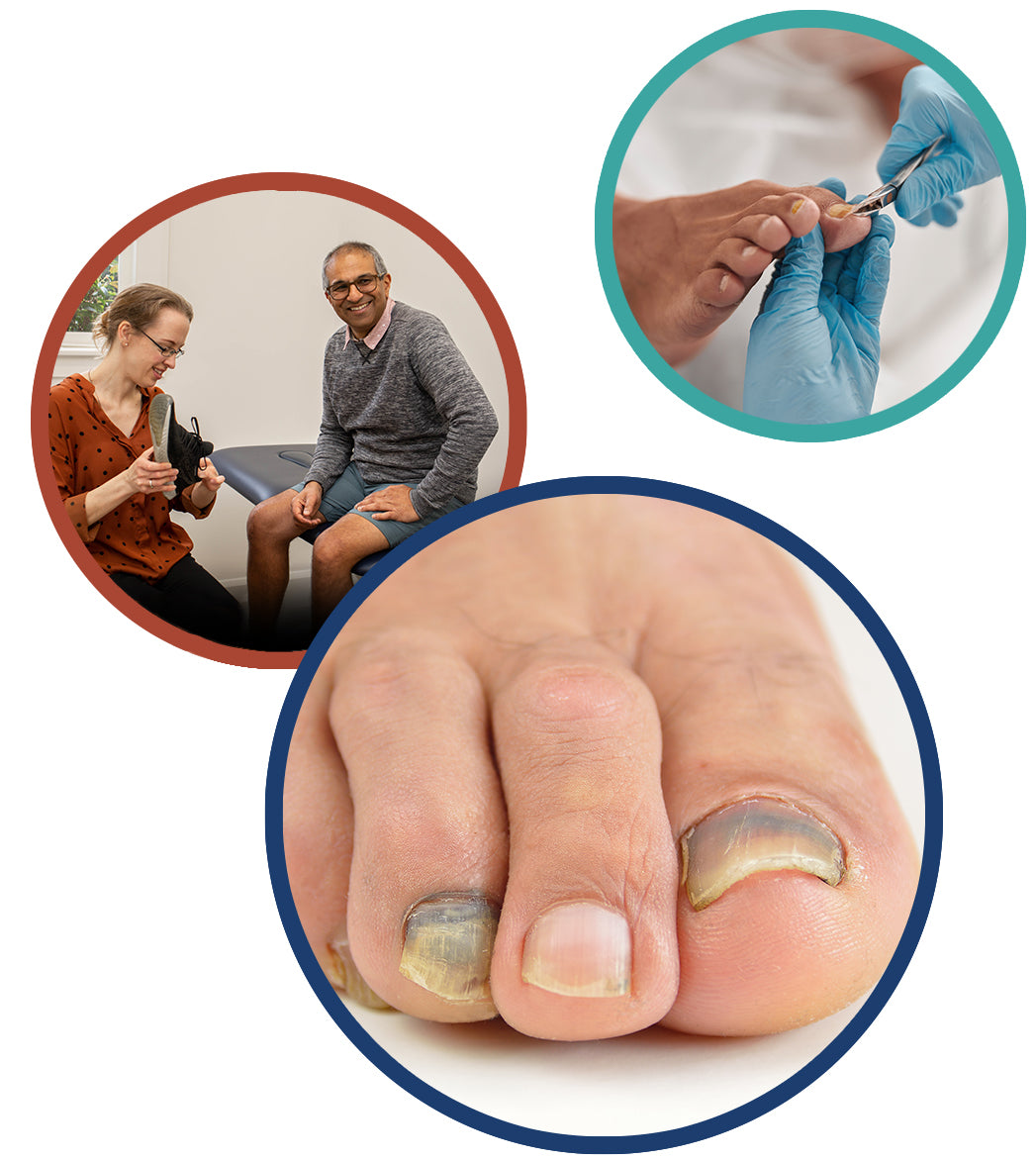Why Is My Toenail Growing Thick & Discoloured?
Ever find yourself thinking back to the days where you didn’t have to think twice about the appearance of your toenails and wondering what happened?
We absolutely understand the impact that damaged, thickened and discoloured toenails can have on the confidence and self-esteem of many of our patients, particularly during the warmer months where we can no longer ‘hide’ our nails so easily behind closed-in boots and warm socks. And it’s not just the appearance of the nails, either. Thickened and discoloured toenails are often accompanied by other problems like having a hard time cutting through them with regular nail trimming instruments at home, or having a fungal nail infection at the same time, which can make the management of your toenails a little more complicated - though thankfully nothing that your podiatrist can’t help you with!
What Causes Toenails To Thicken?
In many cases, our toenails tend to become thicker as we age, simply as a natural consequence of the ageing process. In our later years, the growth rate of our toenails slows down due to reduced blood circulation, particularly in the extremities (our hands and feet). This leads to an accumulation of nail cells, producing thicker nails. Interestingly, men are more prone to experiencing this nail thickening than women. Since this thickening occurs gradually, it may not be immediately noticeable, especially in the early stages. However, as the nail thickens further, it becomes more apparent and can cause discomfort.
Other factors that can cause toenails to thicken include:
- Fungal nail infections - nail fungus can invade the nail bed and cause the nail to become thicker, as well as discoloured, and brittle. Over time, the nail may also separate from the nail bed and may lift upwards.
- Poor foot hygiene: while our feet may be the last area we prioritise other than having a shower, having poor foot hygiene, such as inadequately cleaning and drying of the feet, can create a more favourable environment for fungal or bacterial infections, which can contribute to thickened nails.
- Reduced blood flow to the feet - can also promote nail thickening, whether it happens naturally due to ageing or from medical conditions like diabetes or peripheral vascular disease
- Repeated trauma or injury - this means repeated knocking or damaging the toe bed by objects falling onto the feet, stubbing the toenails, or even participating in sports: runners, dancers, football and rugby players commonly lose their nails and have thickened toenails
- Nail psoriasis - psoriasis is often mistaken for a fungal nail infection with thickened, discoloured, brittle or flaky nails. If psoriasis is present, the nails may also have a more pitted appearance.
- Footwear: the pressure from wearing tight or restrictive footwear such as high-heels or where toes are unable to be splayed can cause damage to the nail cells over time. When the nail growing cells become damaged, the nails may grow back thick and disfigured over time
- Medical conditions: certain conditions such as diabetes, circulatory disorders, or immune system disorders, can affect nail health and contribute to thickened toenails.
Regardless of the cause, some signs and consequences of having thickened nails include:
- Yellowing or brownish discolouration
- Brittleness and crumbling, which means they can start catching on socks and hosiery, which can be painful if they pull on the nail
- In some cases, thickened toenails may become misshapen, taking on an irregular or distorted appearance
- Unpleasant odour: fungal or bacterial infections that cause thickening and discoloration can also lead to a persistent and unpleasant odour emanating from the affected toenails
- Pain or discomfort, especially when pressure is applied, such as when wearing shoes or walking.
- Difficulty in trimming thickened toenails, often requiring extra effort, specialised tools or regular podiatry appointments
- Thickened toenails can also create a more favourable environment for the accumulation of dirt, debris, and microorganisms, increasing the risk of secondary infections
- Separation of the nail from the nail bed
How Can I Get Rid Of My Thick, Discoloured Toenails?
Despite being typically quite difficult to manage at home, thickened toenails are something that our podiatrists can effectively help you manage using our specialised podiatric instruments, leaving you with thinner nails that look better and feel more comfortable in just one appointment. When you come in with thickened toenails, initially we will:
- Use heavy-duty nail clippers to easily reduce the length of the toenails
- Use a specialised nail burr to significantly and painlessly reduce the thickness of your toenails while giving them a smoother finish, which can be very helpful if your thickened nails are currently flaky and have jagged edges
- If the discolouration in your toenails is only on the outer layer of the nail, the effects of the burr may restore them to a healthier, less-discoloured appearance
- Use a blacks file to clean down the sides of the nail, and beneath the nail where possible
We’ll also discuss any products that can help you continue to care for your nails at home, such as our nail softener, making their ongoing management much easier and more comfortable for you.
The next step is to address any underlying factors that may be causing or contributing to the nail thickness or discolouration, such as a fungal nail infection. We have a range of antifungal products available - ranging from our fantastic fungal nail serum to our antifungal (and antibacterial) laundry wash to address the fungal spores living in your socks.

Finally, many of our patients also want to optimise the appearance of their toenails so they can stop feeling self conscious. This is where we can discuss whether Keryflex could be right for you. Keryflex is a brilliant treatment that transforms damaged toenails into beautiful, healthy and natural-looking nails in a single appointment. It’s a cosmetic solution where we remodel toenails that have been affected by damage, trauma, defects and fungus. It involves a painless, in-clinic application of a flexible, durable, non-porous resin nail that allows your original nail to grow and heal.
Ready to love the look of your nails again while feeling a lot more comfortable on your feet?
Contact our team today to book your appointment.

